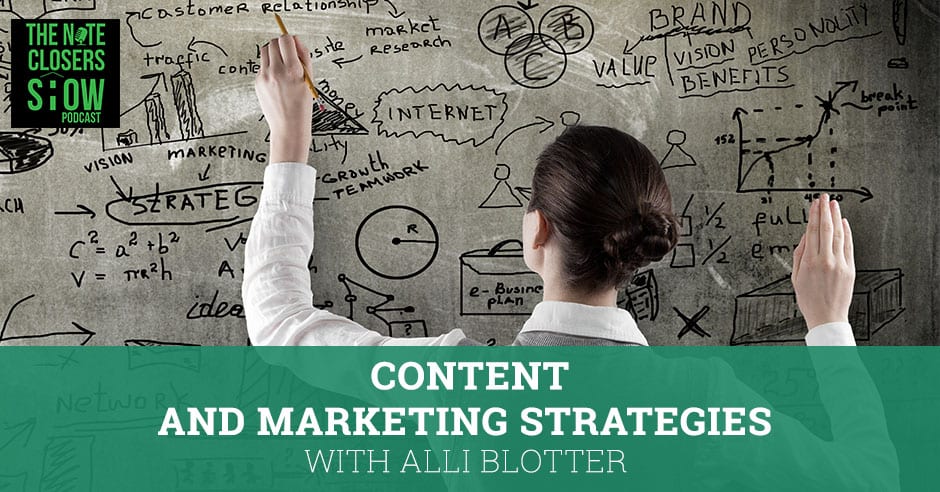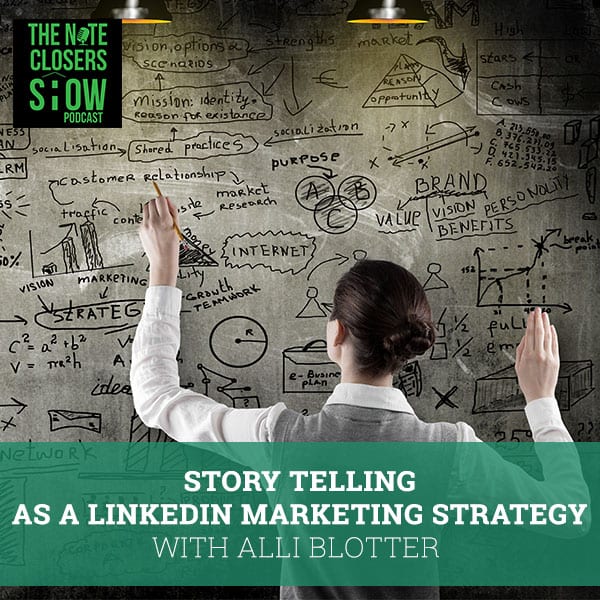
Adding her own touches as a rapper, actor, and overall performer, Alli Blotter shares with us her fresh takes about the content marketing industry as well as how to go about it. Alli is a marketing strategist and content creator. She focuses on the importance of telling a story through your profile, which tugs the emotions and attracts audience. Particularly, she gives advices and tips on LinkedIn marketing strategy and utilizing the visual storytelling aspects of marketing, and talks about the common misconception about going wide instead of being more specific with a niche. Alli shows the usual mistakes people should avoid when it comes to getting their content out there.
—
Listen to the podcast here
Content And Marketing Strategies with Alli Blotter
I am so excited to bring on someone who is going to get your business all heated up. My friend, Alli Blotter, a marketing strategist and content creator is joining us. For those that don’t know who the famous Alli is, why don’t you share with our audience out there to our extended WCN crew and Note Closers crew who you are and why you’re such a rock star?
I’m Alli Blotter. I am a marketing strategist and content creator. I provide creative strategies, copy, video and music to conscious entrepreneurs and organizations. I help them optimize their digital presence with websites, copywriting, blogs, videos, animated videos, rap songs, whatever they need to promote their services and to help spread inspiration and personal development. Emotional intelligence is my niche. That’s the type of content I like to create. I work with life coaches, business coaches, healers, ed tech startups, people making people feel better.
You are the first rapper we have had on the podcast. We’re very diverse here on the Note Closers Show because there are so many little facets and niches to one’s business especially with what their audience is or who they’re looking for. We had Kristie Whites and Elijah Whites our friends. Eli was a speaker who did a tremendous job on the national social media. They are live streamers. We had her on and I was like, “We’ve got to get you on to talk about some stuff.” We’ll probably cover a lot of good things. You deal with so many people. What’s the first big mind block that a lot of entrepreneurs have? Is it trying to find their image, find their audience or figure out who they want to be when they grow up?
It’s all of that. A lot of people are afraid to go deep. I do deep work because that’s how I like to work. One of the first things I do is an archetype quiz, brand archetypes. It helps me understand someone’s core values like the deep service that they offer to the world on a human needs level. Some people are a little hesitant to get that serious about their role in the world but I feel once they do, it just clicks. It’s a neat progression to see them blossom.
Tell me about yourself. There are a lot of things that people don’t realize. What was great was we had Kristie and Elijah around talking about you developing the story, sharing your story out there. You look into the brands like TOM’s Shoes and others out there that they didn’t dive deep into their roots, their ethics, their beliefs, their face system. Many people try to go wide and try to cover everybody. That’s not the best way.
A lot of people want to serve everyone, “I don’t want to narrow down. I don’t want to push people away.” Once you get specific about the people you serve, then you don’t have to mess with clients or customers that you don’t enjoy working with. Your ideal target comes to you and it works. It feels good.
I will raise my hand to be one of those guilty parties who originally tried to go wide and realized, “Let me just focus on the peeps that love me, the niche that we serve the best on things.” You were talking about LinkedIn on National Social Media Day and I’ve got a big LinkedIn profile. It went over 13,500 connections on there. It’s nice. It’s a good database. Out of that, there’s probably 2,000 or 3,000 that are interactive, that do something out there in a regular basis, so we’ve targeted that. I’ve made a conscious switch to dive deep into helping that. What are some of the things that you’d like to ask people to help them dive deep? What are some of the triggers or the a-ha moments that you discover with people?
What their goals are? Where do they want their business to be in five years, ten years? Who are their favorite clients that they love working with? What do they all have in common? The people that found you, how did they find you? Why did you have something that resonated with them? Then, to package that into this yummy, fun way to play with business. I always encourage people if it’s not fun, then you’re not doing it right.
Don’t deal with assholes. Don’t deal with people who don’t want to deal with people you enjoy hanging out with. That makes life very easy when you’re helping somebody that you enjoy helping. What are some tips you’d give to people who may have clients whom they don’t like that they’ve taken on? Is there a way to transition them out or just cut it off?
It’s back to your goals. If you want a stable income it might be better for a couple of people on but start focusing more of your energy on the people who you do want to attract. When I started out with my business, I was in the tech industry and I hated it, so I quit. I would work for anyone who needed websites, blogs, and I’ve found more of my niche. When I started phasing out, one of the best ways to still keep a strong connection with customers who weren’t the right fit is to refer them out to someone else. You can still help them along with their business, but they might not be the best fit. “I know this person who might be able to help you or I’m happy to be available if you could send me a quick email.” Still be in their lives but not serving them every day is a great way to move on in a happy way for everyone.
“We might not be a fit anymore. We need to have a business divorce. Counseling is going to solve that because I don’t want to work with you anymore. You make it banged to my existence.” I joke with people all the time because with us in the real estate space, we’re networking a lot. We’re out talking to potential investors who invest in our business or joint venture on stuff. That’s one of the big things I tell students is like, “If you don’t like somebody, don’t use their money. Don’t partner with them on a deal. It will end ugly. Nothing ends on a good note.”
You’re not going to be able to help them in the way they want, so there’s no reason to.
What are some of the great stuff that you enjoy creating for your clients out there?

Marketing Strategies: Finding fun, creative ways to express value is an awesome job.
I’m super excited about integrating raps into my content services. I am writing raps for kids to help them understand how to deal with their emotions and process them in healthy ways. I inspired one of my clients to rewrite The Fresh Prince of Bel-Air to be about her coaching business. Finding these fun, creative ways to express value is an awesome job.
Who are your favorite rap artists?
I like underground artists. Tiye Phoenix is my queen now. Nitty Scott, she has helped the company. I like Flocabulary. They create content for kids too. I love Missy Elliot who is a legend and Will Smith. I love the people who are spreading positivity. They’re not just talking about their cars, homes, and drugs, they have something to say.
Have you seen over the last couple of years it being easier to transition raps into business as it is more socially accepted versus it being so black and white? I don’t mean it in a color thing, but you either loved it or hated it? That’s such a uniquely different approach to business. Is that one of the things that you’d like to recommend to people? If there’s a way to shake it up, let’s shake it up a little bit.
It’s usually not one of the first things I pitch to them because it is getting used to it, but it depends on their target. If their target is open to this creative way to absorb knowledge and value, I say upfront that, “I’m a performer, an actor. I approach marketing and storytelling from a very theatrical perspective.” If they’re open to that I’m like, “Let’s go.” If they’re not, “Down the line you might think about it.”
That’s such a great way to look at things as a theatre performance thing because in now’s marketing, in this business, everything is so visual. We have an attention span of less than nine seconds, of less than a goldfish. I was watching TV the other night, a thing about travel and I was like, “Every commercial comes with food.” It was always like food coming up, the burgers, the pizza, the wings, the visual aspect. I turned to Steph and said, “I got hungry for some wings.” That marketing worked. You see that everywhere we’re going, you talked about LinkedIn bringing video on, Facebook Live, Instagram TV, it’s becoming more and more about video. A lot of people are scared about getting in front of the camera. What are some of those big hurdles that people have about getting in front of the camera once they get rock and rolling, it’s not that big of a deal? What are some of the big things that you’ve helped people with?
A lot of them are not comfortable in their own skin. They can sit one on one and retell their story, but the thought of being judged on a mass scale is scary for them. I try to encourage them to think of exactly who they’re talking to. Get a picture of a person in your mind who can be your mom, your friend, anyone whom you love talking to. It also helps with the authenticity of coming across on cameras and not like this robot in headlights, talking to a person. The hard thing about Facebook Live is you don’t get that feedback. In normal conversations, you can go with facial cues and it’s that cycle. To imagine that person who you’re picturing, how they would react to what you’re saying. It’s creating that full 360 experience in your mind before you step in front of the camera.
I’ve used this in the past by putting a sticker below the camera that says smile or smiley face. They talk about imagine somebody’s naked in the audience. That doesn’t work for many people.
That’s not how you naturally act in society.
What are some of the other things that you’re doing? What other types of content are you creating for some of your clients out there that are a little bit off the beaten path?
One solution to the camera-shy people is animated video, explain their videos. The little white-board people. I call them paper dolls on crack. It’s a great way to explain complex concepts in a fun, engaging way and illustrate how systems break down. One of my clients was a leadership coach and her theme was leadership excel or sports. I had little football players and basketball players acting out leadership metaphors. It’s a fun way to learn.
If you’ve got the story behind, makes it very creative too in having somebody else draw that where you’re not the focus of the video, but your stick figures are. We see those working very well because it helps people get the message out. We see this especially in the real estate on another side. I haven’t seen much of that going on the LinkedIn side which is a place where there are a lot of the CEOs, the business owners especially with our avatar for most real estate investors being 35 to 65 spend a lot of time on there. What are some of the strategies that you would recommend to use on LinkedIn to help get the message out or draw a bigger audience?
Storytelling 100%. However, you’re spending your day if it’s going to Michigan and driving all over everywhere. That’s part of your job and part of your story. Taking pictures of those experiences, recording those experiences, putting them on LinkedIn. A lot of people have this perception that LinkedIn has to be businessy. It has to be professional. The most engaging stories are the ones where someone overcomes something. There’s an obstacle where there’s a chance they might lose. If you share those moments on LinkedIn, people are going to relate to you more. For example, I was touring this house and there was a leak. Something catastrophic happened and then the story of how you fixed that problem, how in the end you sold it for five times whatever it was worth. Those stories are concrete ways to let people know that this is how I spend my time, this is what I care about, and this is how you can benefit from my services.
That’s a good aspect of things. It doesn’t have to be an hour-long story. It can be short, two-minute, five-minute videos, case studies, quick cases with whatever you want. The people love to hear that. The good, the bad and the ugly. From the stuff that we do, the ugly draws a bigger audience.
The people love drama and are magnets to that stuff. If you give them that and at the end how you overcome it or even if you don’t, even you just learn, “I’m not doing this again.” Embrace it with intention, with values.
What are some big faux pas that you see people making out there that drive you bonkers? What are some of the biggest mistakes that you see people making?
Particularly on LinkedIn, social media, they share something, and they don’t share why it matters. It’s like, “This was a great article. This video is cool. I learned so much.” What did you learn? What specifically did you overcome because of this? How did you apply it to your life and your business? Why does your audience care? Why should they read it? How will it help them in their lives? To get very specific, a lot of people want to push out the content for the sake of having content without the strategy behind it, how is this piece of knowledge going to benefit someone else and why? A lot of people lack intention. I try to help them be very specific to create these gates of does this piece of content fit your values? Does it apply to your audience? Does it help you reach your goals? Then, you can post it. Post with intention.
A lot of people are taking new services like Hootsuite or Buffer, which are great to help sort things out. A lot of times they enter in an RSS feed from like a website and it is republishing, but they’re getting upset because they’re not seeing a lot of interaction. They don’t share that one nugget of why this is important or a great article on foreclosures but who needs another great article one for foreclosures? How does this help me? The question of why it is important to your avatar. You should share that versus to just an article out there throwing up on people with information. Sometimes less is more.

Marketing Strategies: Posting two or three times a week and starting a conversation versus ten times a week without any context at all is more effective.
Post two or three times a week and start a conversation versus ten times a week without any context at all is more effective.
For those that are trying to draw an audience besides sharing articles or sharing videos, any other interesting things that you’ve used, like search engines or Facebook targeting, or LinkedIn targeting? It’s so unique with the search engines on LinkedIn where you type in keywords and try to find people there.
I’d stick mostly with the organic content side. I don’t get into ads and paid stuff. I prefer to train myself on the storytelling like the algorithms. I do keep up with them but it’s not my passion. I tend to stick more with teaching my clients on how to tell their story intentionally and whoever is looking for it, they’ll find it.
It’s a great suggestion because we all know that big brother’s constantly changing the numbers on the advertising and the ads. There’s been a big push over the last month. A lot of companies are dropping a lot of money into Facebook ads. Now they’re like, “Why has my audience cut in half or it’s a third of what it was? What am I doing wrong?” I’m like, “You’re not doing anything wrong. It’s just that big brother is changing what you get.”
I refer my clients to SEO companies where their entire job is keeping up with those algorithms, knowing exactly where to put those dollars for the best way. The best investment is to leave it to the experts, if you’re going to put in ad dollars.
What are some mistakes that you’re seeing with people making religiously on LinkedIn? They’re not finishing profiles, photos or are they trying to be too broad?
A lot of people don’t put time into their profile. The algorithm doesn’t change that much and that’s what I love about LinkedIn. If you take the time to fill out your profile, sit down to think about your values, your target, of what they want to see, LinkedIn will reward you handsomely for it. It’s so easy trying to keep up with Facebook algorithms, Instagram algorithms like LinkedIn. All you have to do is know who you are, engage and you’ll show up at the top of the rankings. A lot of people slap on that they’ve worked at this company from this year to this year instead of taking the time to do the résumé bullet points, putting keywords, numbers, getting specific with how many team members you have, the budgets you work with, the locations you’re in. The more detailed you are, the better the story you tell, and the more LinkedIn will reward your work.
That’s a good point because there are people out there we came across that have barely anything on there and you’re like, “They don’t look that interesting.”
I teach LinkedIn as a storytelling, like your character. Everyone wants a very detailed character. What does their hair look like? What is their favorite food? Get specific by painting a picture of your character on your profile so people know exactly who you are and exactly what you’re about.
That goes back to the theater side of acting. Knowing your character’s motivation whether they smoked twelve packs a day or drank green tea everywhere they go. It’s specific characters that people act. I’ve never heard it discussed like that, but that is a great analogy on LinkedIn. It’s the closest thing to having an online résumé for the most part besides being on Monster.com or something like that. That’s not where you want to be but taking the time, good photos, sharing is the story about each job because that’s a lot of things that people are looking for.
Your jobs and your clients don’t totally describe the why, the motivation of what you want to do with your life and the deep stuff. Being open, vulnerable and showing that because people you work with like you not because you have these skills or talents, but they like you for your personality. If you show that on LinkedIn the people who are attracted to that will find you so much easier.
For those of you who have never been in the theater aspect of things, it’s not that hard to think of that. That’s what’s so much on social media. You are like running your own media company on a daily basis. It’s sharing the struggles, sharing the good things. A lot of people are scared to share their mistakes because it makes them look vulnerable, but it makes them come from a stronger point though.
As long as they show what they learned and it’s like, “Here I made this mistake.” Here’s how you can avoid it. Here’s how I can help blaze past all the stuff I went through. It’s a benefit. Getting people in that mindset of, “This is my life, I own it. This is why I’m awesome.” The people at the top of their website are like, “I’m so and so.” No. First the target, what do they get? What is their benefit?
How often is too much or how often is too little to send out email marketing to their clients?
It’s about the quality of what you’re sending out. If you’re sending out to stay in touch, you’ve got to be intentional about why you’re staying in touch. What I do is a lot of event advertising. “Mark your calendar for this date for the month. A reminder, ticket sales are now.” It’s very strategic about what you’re keeping in touch with them. If they are coming in to have separate email funnels, particularly to lead people who are already members, be very specific about whatever you’re doing that will enrich their lives. Even if it’s just you woke up, got on LinkedIn and posted some things, what did you learn from that? How is what you’re doing going to help them make their life and their business easier? Listen to them. If they say, “Once a week is too much. I want once a month,” then, give it to them. It is about listening to your specific audience because one size does not fit all.
That’s true because everybody’s different in their act. Anytime you can break it down too little. That’s one thing that I struggle with because we do so much different events with the podcasts. We have our weekly webinars which we share to everybody. Also, we have classes on the regular. It’s difficult sometimes when you’re running multiple kinds of angles for stuff. For the most people who are in our audience, they have a database. They’re buying assets and marketing out to those assets or those with context, “I’ve got a new deal to fund.” Sometimes switching it up, I’ve told people, “If you’ve got something get them primed ahead of time versus I got to fund something. Now, I need to send an email out.” You’re behind the eight ball at that point.
Have the end of the funnel in mind when you start. Very slowly get them into your fold and your vibe to not let all the information out, in the beginning, to have them want more. That’s the big thing.
It’s like going dating. You might get a kiss on the cheek or a hug after the first meal, not jumping into bed isn’t the type of relationship. That’s not the one email stand that you want. You have that people who’ll want even, “I don’t want that unsubscribe,” and they’re out of your system because you led with the wrong foot. There are some basic stories, three or four that people should have in their tool belt or have on their marketing to share the things that they have. What are some of the stories that you would recommend people to talk about?

Marketing Strategies: In every story, there has to be a big obstacle or else it’s not interesting.
First and foremost, how they got to where they are? Why they’ve decided to become a real estate investor? What is their passion about? Where were they before? Why has their growth meant so much to them? The background that I like to tell my clients is no one likes a character that exists in this vague and nebulous space. Their backstory is what gives them perspective and their meaty fun character. Sometimes it’s fun to play with the future. I imagine my business thing here and this is the stuff that I will work with, to play with that.
If it’s possible to tell the story of like a sale if everyone involved is cool with having their part of the story be in there. How that flip worked? In every story there has to be a big obstacle or else it’s not interesting. Then lessons. If they discovered something that they thought at first, “This is going to work,” but it fell flat on their face. Why was that struggle necessary for them to learn? “I’m not going to do that in the future,” and then, to be able to share that with other people of here’s what to avoid. Becoming that resource for, “These are my struggles and I’m going to help you avoid them.”
Those are great three stories there. Backstory, what you loved about it. Your future story and struggles. Anything you’ve learned along the way, the biggest a-ha moments. That doesn’t have to be too long. If you’ve got happy clients, share their story too.
Testimonials absolutely.
They always seemed to work the best based on video if you can, if not written, it’s as good as long as you’re sharing it.
What I love to do is the animated video. Throw up a picture of their client and have their words come across in fun transitions. You can turn anything into a video.
Where do you go to refresh your mind? Where do you draw your amount of inspiration from?
Music first and foremost. Then, nature. I go on hikes. I follow mainly life coaches. I don’t follow a lot of marketing strategists because a lot of them are more on the SEO algorithm side. I follow storytellers who are going on journeys, like travel bloggers who are doing amazing things. I’m like, “How can I take those stories and apply them to anything?” I’m a nerd. I like astrology and had followed that. I get inspiration from food bloggers like the stories they tell, going to a restaurant and eating a burger, making that sound interesting. I find that fascinating. I get inspiration from random places.
Who doesn’t love food whether you want to eat it all or not? I enjoy cooking too a lot of times. I watch the strange foods with a guy from Minnesota, the baldheaded guy who eats rat tail in Japan or bugs here and there. That makes your skin crawl sometimes, but it’s interesting ways to tell a story. The great things to talk about is be interesting. Everybody has some interesting facets of their life. Everybody has some interesting facets in their lives.
A lot of people don’t think they do but everyone has quirks. Everyone has fascinating parts of their life.
Animals always do well in sharing. We see a lot of bring your dog to the work today or the company pet, which always drives a lot of traumatic stuff. It’s just different.
A lot of people don’t embrace the silly in work but that’s what makes it worthwhile.
Do you think though that sometimes the reason that people stray away from that is they’re afraid of offending somebody? We’ve lost our sense of humor out there in the business world a lot.
A lot of people I work with are afraid of not coming off professional. The society is evolving. People play ping pong at work and wear flip-flops. It’s becoming more casual to live life. Embracing that from a marketing standpoint is so beneficial that the lines between life and business don’t have to be so divided.
It can blur a little bit more because we do so much especially when you enjoy what you do.
You can post pictures of your vacation like this break helped me get this new idea, this new inspiration to go back to my job and kill it. Everything has a synergy and just embrace it.
I had some great advice from a mentor of mine one time who said, “You’re not going to make everybody happy. People are going to fall into three buckets. You have the 33% of people that love you, adore you. You’re going to have 33% of the people out there who are going to hate you no matter what. They are going to dislike you because of your age, weight, sex, height, whatever you wear, whether you have a good breath or bad breath. Whatever they’re going to find something to dislike about you. Focus on the 33% of people who love you and then the people in the middle of that who don’t know you.

Marketing Strategies: Bank on your strengths. Don’t try to improve your weaknesses. The people who love you for who you are and what you do will keep loving you.
Bank on your strengths, don’t try to improve your weaknesses. The people who love you for who you are and what you do will keep loving you. The people who point out your failures, who don’t like you for this reason, you don’t want to work with them anyway. Don’t put your energy there.
If you do something and somebody comes back with a negative comment, just move on because I do some crazy things. We’ve done the whole recent emails that get some ASS: assist, strategize, support. 50 Shades of Gray, do you feel like you need to spank your borrowers? Have a ball gag in your mouth and can’t get the words out? I’ve got all sorts of hate email, but it was one of the best opened emails we sent out.
The people who want that, they loved it. They would want more of that. It’s weeding out people who would best fit for you.
Unsubscribe can be your friend. Do you have a rap that you’re working on now?
I’m not going to lie, I’m always happy for the opportunity. It’s almost the anniversary of my build song, the rap. It’s exciting.
How do folks get ahold of you, to have you work your magic to help them in their business? What’s the best way for people to reach out to you, Alli?
Check out AlliBlotter.com. Email me at AlliBlotter@Gmail.com. You can follow me and all of my endeavors on LinkedIn, Facebook and Twitter, Instagram, YouTube, all the places. Holler at me and let me know what your ideas are. If you have a project in mind, you want to brainstorm, bounce ideas let me know. I’m happy to chat with you.
Alli, thank you so much for taking the time out to join us. A lot of people are going to get a lot of good out of that.
Thank you so much. I had so much fun.
Check out Alli Blotter at AlliBlotter.com. You will not be disappointed. She does some amazing things for clients all throughout Austin, Texas, but also throughout the country as well helping people out there. Don’t be afraid to go out and share your story. We’ve got a lot of thumbs up from people who love your rap, Alli. That’s great stuff. Everybody, thanks for joining us. Go out, take some action, take some of the tips that Alli shared. If you do, I guarantee you will find an easier way to the top and we’ll see you there.
Important Links
- Alli Blotter
- Kristie Whites and Elijah Whites
- Flocabulary
- Hootsuite
- Buffer
- Monster.com
- AlliBlotter.com
- AlliBlotter@Gmail.com
- Alli Blotter on LinkedIn
- Alli Blotter on Facebook
- Alli Blotter on YouTube
About Alli Blotter

Alli Blotter is an intuitive Marketing Strategist and Content Creator at AB Marketing & Copywriting. She provides digital marketing services for conscious entrepreneurs and organizations. With 10 years of copywriting experience, Alli has a passion for personal development, emotional intelligence, wellness, comedy and rap.
As a professional speaker, Alli hosts workshops and makes guest appearances to educate entrepreneurs on brand values. She is a LinkedIn Career Advice Community Mentor and a 2017 Best LinkedIn Profinder Professional.
>With a strong focus on strategy and storytelling, Alli can help you share your vision for a thriving lifestyle. Discover how to inspire your audience at AlliBlotter.com.

